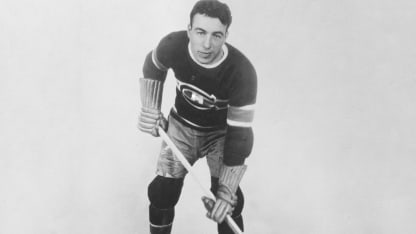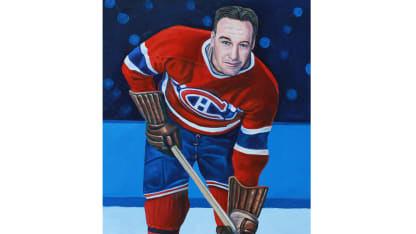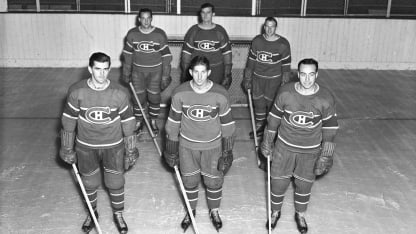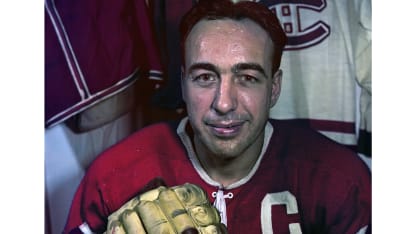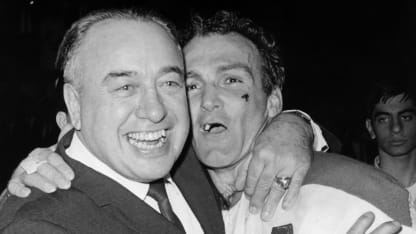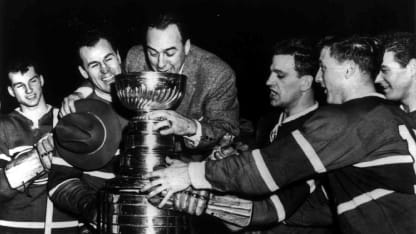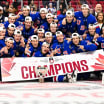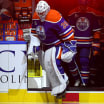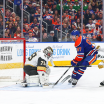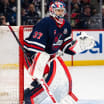Maturity began to take hold next season, perhaps because he wanted to impress his boyhood idol. The electrifying Howie Morenz, the greatest star in the NHL from the mid-1920s to the early 1930s, had returned to the Canadiens for the 1936-37 season. "Hell, he was my hero, all right," Blake said. "When I was growing up in Northern Ontario, I used to call myself Howie."
However, following a career-ending leg injury, Morenz died on March 8, 1937, at 34. Morenz's inspiration must have lingered because Blake's career took off the season following his idol's death. Despite his rising star, the Canadiens' fortunes declined, both on the ice and at the box office.
When coach Dick Irvin moved from Toronto to Montreal in the summer of 1940, he saw only one bona fide NHL player on the Canadiens roster: Blake. He made Toe captain and started to rebuild around him.
Lach arrived that year, and the promising Richard came in 1942. A series of injuries to Richard caused concern that he might be too brittle for the NHL. After he started 1943-44 skating with Blake and Lach, another injury soon sidelined him. He returned to the lineup playing with others. But during a schedule break around Christmas, Irvin traveled to Saskatchewan to visit his family, leaving Blake to run practices. Foreshadowing his future as a coach, Blake put Richard and Lach back on a line with him, and Irvin kept them together when he rejoined the team for the Dec. 30 game against the Red Wings. That night, Richard -- who had four points on the season -- got three goals and two assists in an 8-3 win. The "Punch Line" was born, and hockey was never the same.
"That's when my career really got going," Richard told famed broadcaster Dick Irvin, the coach's son, for his book "The Habs: An Oral History of the Montreal Canadiens 1940-1980." Richard spoke no English at first and Lach spoke no French. Blake handled the translating and much more. Lach told the author Irvin that Blake "was good for me and Rocket. We called him 'The Old Man.' He was in his 30s. One thing about Toe was the way he practiced. Boy, how he would work. He always said, 'The way you practice is the way you played.' He never fooled around in practice. That's what made us successful."
